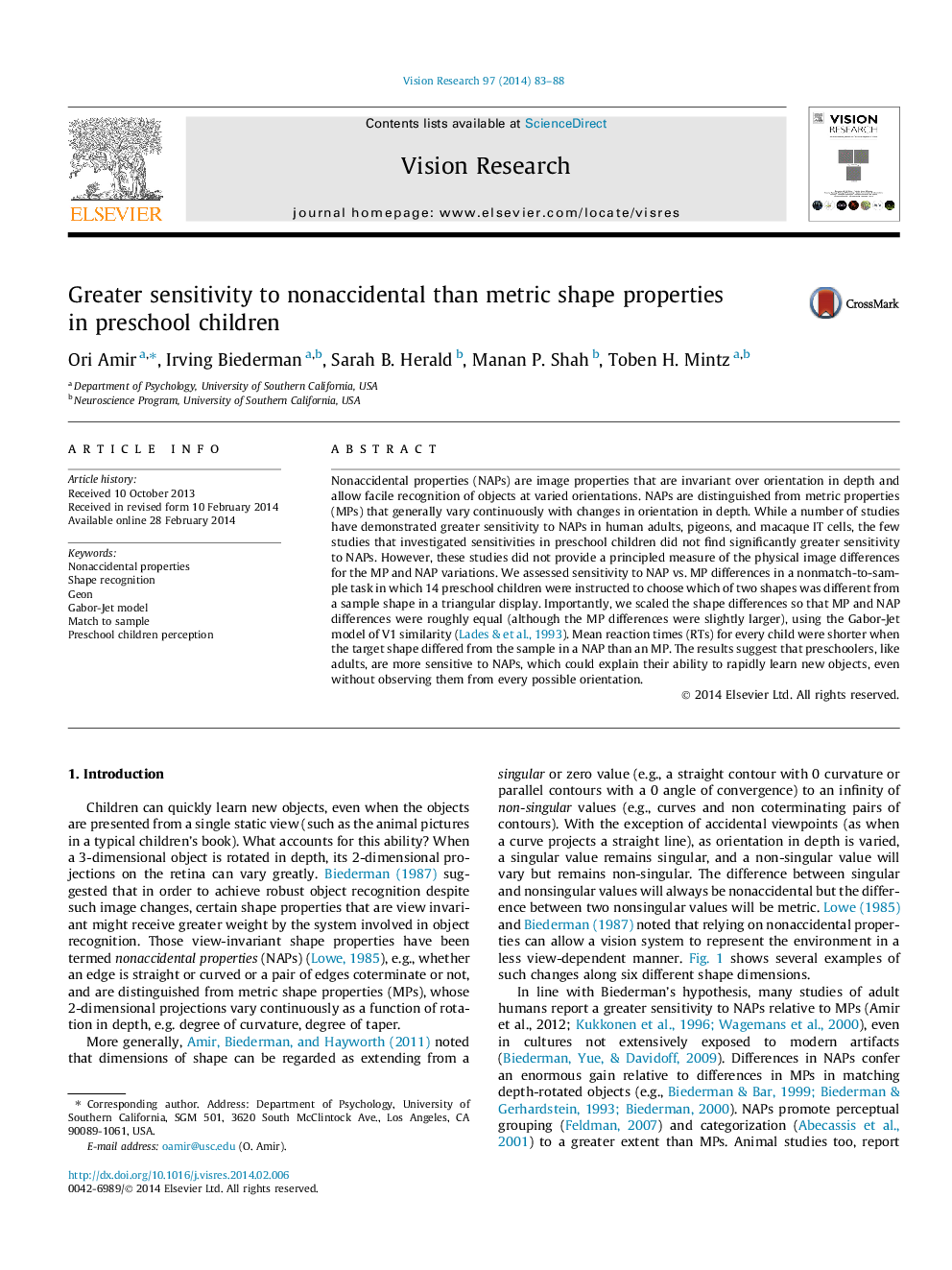| کد مقاله | کد نشریه | سال انتشار | مقاله انگلیسی | نسخه تمام متن |
|---|---|---|---|---|
| 6203545 | 1603197 | 2014 | 6 صفحه PDF | دانلود رایگان |
- Nonaccidental Properties (NAPs) (straight vs. curved) are invariant to 3D rotations.
- Metric Properties (MPs) (e.g., degree of curvature) vary continuously with 3D.
- Children's sensitivity to NAP vs. MP differences assessed by Nonmatch-to-Sample task.
- NAP, MP differences scaled to be physically equivalent by model of V1 tuning.
- Unlike 2 prior reports, every child was slower in detecting MP than NAP differences.
Nonaccidental properties (NAPs) are image properties that are invariant over orientation in depth and allow facile recognition of objects at varied orientations. NAPs are distinguished from metric properties (MPs) that generally vary continuously with changes in orientation in depth. While a number of studies have demonstrated greater sensitivity to NAPs in human adults, pigeons, and macaque IT cells, the few studies that investigated sensitivities in preschool children did not find significantly greater sensitivity to NAPs. However, these studies did not provide a principled measure of the physical image differences for the MP and NAP variations. We assessed sensitivity to NAP vs. MP differences in a nonmatch-to-sample task in which 14 preschool children were instructed to choose which of two shapes was different from a sample shape in a triangular display. Importantly, we scaled the shape differences so that MP and NAP differences were roughly equal (although the MP differences were slightly larger), using the Gabor-Jet model of V1 similarity (Lades & et al., 1993). Mean reaction times (RTs) for every child were shorter when the target shape differed from the sample in a NAP than an MP. The results suggest that preschoolers, like adults, are more sensitive to NAPs, which could explain their ability to rapidly learn new objects, even without observing them from every possible orientation.
Journal: Vision Research - Volume 97, April 2014, Pages 83-88
